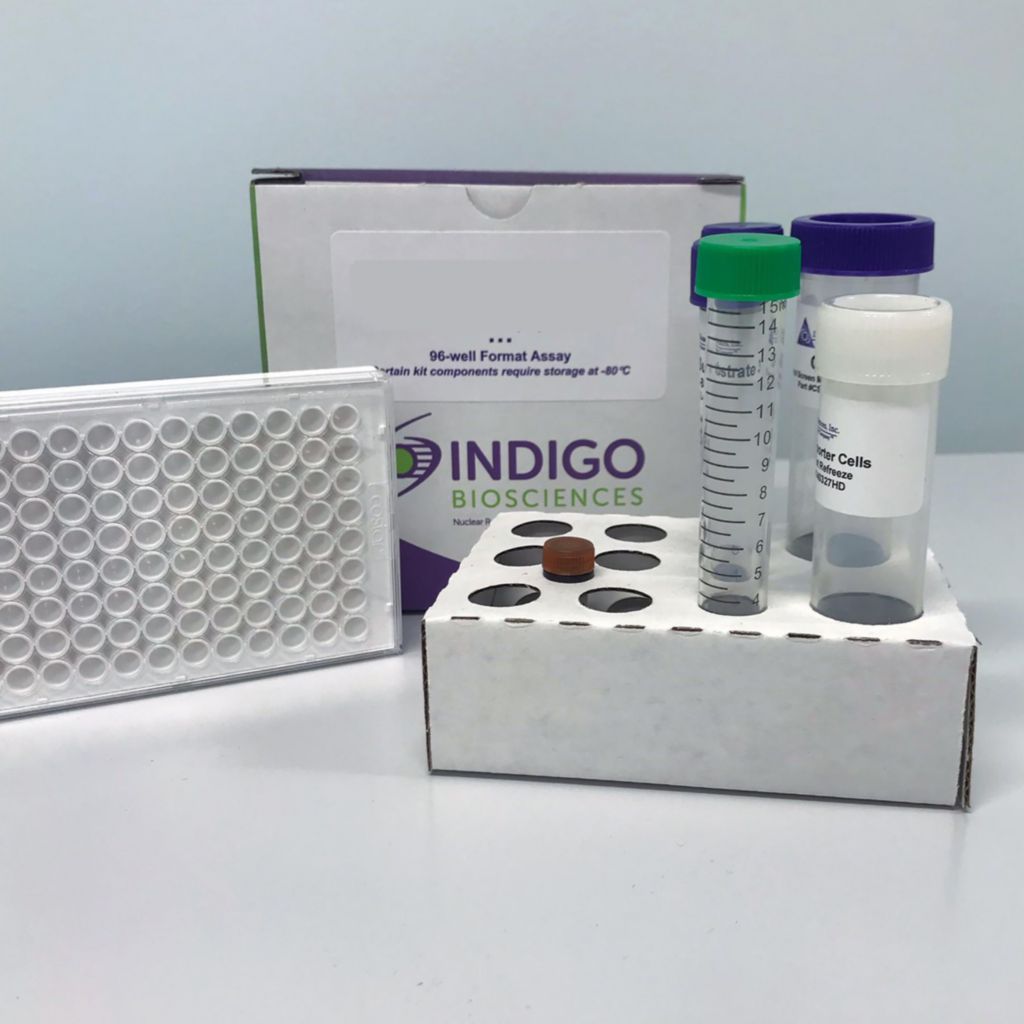Product Description and Product Data
This is an all-inclusive cell-based luciferase reporter assay kit for the Human Insulin-like Growth Factor-1 Receptor (IGF-1R). INDIGO’s IGF-1R reporter assay utilizes proprietary mammalian cells that have been engineered to provide constitutive expression of IGF-1R. In addition to IGF-1R Reporter Cells, this kit provides two optimized media for use during cell culture and in diluting the user’s test samples, a reference activator, Luciferase Detection Reagent, and a cell culture-ready assay plate. The principal application of this assay is in the screening of test samples to quantify any functional activity, either activating or inhibitory, that they may exert against human IGF-1R or the coupled RAS-MAPK pathway. This kit provides researchers with clear, reproducible results, exceptional cell viability post-thaw, and consistent results lot to lot. Kits must be stored at -80C. Do not store in liquid nitrogen. Note: reporter cells cannot be refrozen or maintained in extended culture.
Features
Clear, Reproducible Results
- All-Inclusive Assay Systems
- Exceptional Cell Viability Post-Thaw
- Consistent Results Lot to Lot
Product Specifications
| Target Type | Growth Factor Receptor | ||
| Species | Human | ||
| Receptor Form | Native | ||
| Assay Mode | Antagonist | ||
| Kit Components |
| ||
| Shelf Life | 6 months | ||
| Orthologs Available | No | ||
| Shipping Requirements | Dry Ice | ||
| Storage temperature | -80C |
Data
Target Background
Insulin-like Growth Factor-1 Receptor (IGF-1R) is a Type 1 IGF receptor belonging to the receptor tyrosine kinase (RTK) family. IGF-1R activity is mediated by both IGF-1 and insulin. Upon ligand binding, the receptor is capable of activating several signal transduction pathways, including PI 3-Kinase and Ras-MAPK to regulate proliferation, migration, and inhibition of apoptosis. Although signaling pathways mediated by both IGF-I and insulin are quite similar, the biological and physiological responses are quite different between them. Activation of IGF-I/IGF-1R regulates cellular growth and proliferation, whereas insulin mediates more dramatic glycolytic responses. Several in-vivo and in-vitro studies have indicated that correlation and relationships of IGF-I/IGF-1R signaling in cancer development as well as cancer cell lines. Now clinical approaches to inhibit IGF-I/IGF-1R signaling in cancer development have been investigated using monoclonal antibodies and small molecules.
. IGF-1R is a tetrameric transmembrane protein. The extracellular α2 subunits form the ligand-binding domain, and the disulfide linked β subunits form the transmembrane domains and the intracellular tyrosine kinase domains. Following IGF-I binding, the tyrosine kinase domains are activated and initiate intracellular signaling cascades that include RAS-MAPK pathways. For example, activation of the RAS-MAPK pathway leads to activation of ERK1/2 and subsequent phosphorylation and activation of the transcription factor Elk-17. It is IGF-1R signal transduction via the RAS-MAPK-ERK1/2 cascade that is exploited by the reporter cells provided in this kit.
INDIGO’s IGF-1R Reporter Cells express a hybrid Elk-1transprion factor in which the native Elk-1 DNA-binding domain (DBD) has been replaced with the yeast Gal4 DBD sequence. The luciferase reporter gene is functionally linked to an upstream Gal4 Upstream Activation Sequence (UAS). When activated, Elk-1 binds to the UAS elements to initiate the formation of a complete transcription complex that drives Luc gene expression. Quantifying changes in luciferase activity in the treated reporter cells relative to the untreated cells provides a sensitive, dose-dependent surrogate measure of drug-induced changes in IGF-1R activity.
Therefore, the principal application of this assay is in the screening of test materials to quantify any functional interactions, either activating or inhibitory, that they may exert against IGF-1R or the coupled RAS-MAPK pathway.
Product Documentation
Also available as a service
